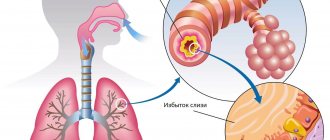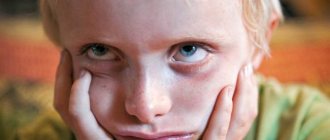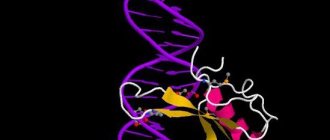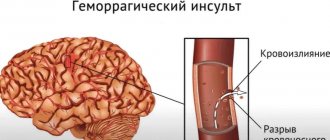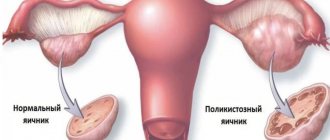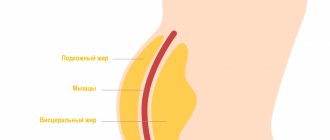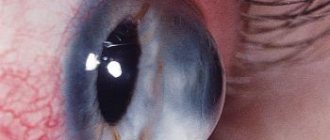What is Down syndrome?
Down syndrome is a genetic disorder in which a random mutation in the 21st pair of chromosomes results in a third copy.
Normally, a healthy person has 23 pairs of chromosomes, each containing an individual set of genes. Any change in their quantity (underdevelopment of one pair, the appearance of a third chromosome in a pair, doubling of a pair) and quality (all kinds of changes within the chromosome itself) leads to irreversible congenital disorders of human development. According to the Downside Up Foundation, about 2,500 thousand children with Down syndrome are born in Russia every year. 85% of families refuse them in the maternity hospital, including on the recommendation of medical personnel.
In the case of Down syndrome, an additional chromosome causes some features in appearance and pathologies of internal organs. The cardiovascular system and gastrointestinal tract are most often affected. The extent of symptoms varies among individuals, but all patients have lifelong mental retardation and developmental delays. Despite this, people with Down syndrome can study, work, play sports, take driver's license tests, act in theater and participate in beauty pageants².
Melanie Segard, who has Down syndrome, talks about the weather on French television. Photo: Franceinfo
In recent decades, there has been an increase in the incidence of Down syndrome. This is due to the increasing age of pregnant women and the negative impact of environmental factors on human health. Between 1979 and 2003, the incidence of Down syndrome in the United States increased by 30%¹.
In Russia, assistance to children and adults with Down syndrome is provided by such projects as “Love Syndrome”, the “Downside Up” Foundation and others. They organize fundraisers, hold thematic meetings, events in support of their wards, and help children with employment.
The birth of children with Down syndrome is not that uncommon. Previously, they were attributed complete incapacity - the inability to take care of themselves and study. Today, the study of this genetic disease has made great progress.
Now the development of such a child gives very positive results - doctors, teachers and psychologists agree. They are called “sunny” children, because these kids almost always have a good mood and a smile on their face.
Today there are modern methods for diagnosing this disease during pregnancy. What to do is, of course, up to the parents to decide. In order for such a child to become a part of society, more attention, care, diligence, as well as special conditions for learning will be required. The development of such children takes longer, but they are capable of much.
Not like everyone else
You will immediately notice a child with Down syndrome in a crowd of peers. If his parents paid enough attention to his development, education and socialization, he may well lead the life of an ordinary person.
Of course, there are external differences that often scare away other children and their parents. Perhaps society is not yet fully ready to accept these people. The thing is that for quite a long time people with Down syndrome were attributed with a variety of negative characteristics.
It is a misconception that such a baby cannot learn or communicate. Of course, the regular school curriculum is difficult for him. He needs to pay a lot of attention - thanks to this he can achieve good results. Yes, they are “not like everyone else,” but these children have the right to life.
Why is this happening?
A mutation occurs in the twenty-first pair of chromosomes - an extra third chromosome is added to the usual two. Unfortunately, this disease cannot be cured. Most often, women who give birth late, from 35 to 45 (47) years, are at risk. Today, doctors immediately offer them diagnostics for a number of genetic diseases, including Down syndrome. It is not a rare pathology - for every 700 births there is 1 child with this disease.
This disease has been known since 1866, when scientist John Down first described its symptoms. It was only in 1959 that the first confirmation of the genetic nature of the disease appeared thanks to the work of Dr. Jerome Lijeune. And John Down described this syndrome as a form of mental disorder.
Before 1970, there were very negative legends about Down syndrome. Then it was advised to send such children to special institutions like psychiatric hospitals. It was believed that they were completely incapable of learning, communicating, or independently performing meaningful actions. Few people wondered why this happens, where the disease comes from and what people with this syndrome feel.
In such conditions, they rarely lived to be 20 years old, although today the life expectancy of people with this diagnosis is much higher. Many live an active life until they are 35-40 years old.
Early diagnosis of Down syndrome
The disease is detected in the early stages of pregnancy. There are several methods:
- mother's blood test (detection of child's DNA elements);
- analysis of amniotic fluid;
- ultrasound examinations.
Women over the age of 35 are not recommended to undergo interventions (invasive diagnostic methods), as this can aggravate the course of pregnancy. Fetal development occurs at the same time as in healthy children. After 9 months the baby is ready to be born. Today, due to the possibility of early diagnosis, the number of children with this diagnosis has decreased: parents often decide not to continue the pregnancy.
External signs
All children with this syndrome are characterized by external features:
- flat face, small nose;
- oblique eye shape;
- small mouth, but large tongue (most often the entire tip sticks out);
- deformed little fingers;
- weak muscles throughout the body;
- too mobile joints.
Down syndrome is also characterized by internal changes that often require treatment or close monitoring:
- heart defect;
- eye diseases (cataracts, glaucoma);
- gradual hearing loss;
- problems with the gastrointestinal tract;
- difficulty breathing due to improper structure of the nasopharynx.
Additional anomalies are occasionally encountered, such as the absence of one rib, excessively short stature, or curvature of the chest.
How does a child develop?
Yes, the news that a woman is expecting a child with Down syndrome comes as a huge shock to many. The doctor is obliged to inform parents about what can await them after the birth of the baby. Today many doctors are negative, although there are not many reasons for this.
It is best to consult several specialists to accurately find out the details of the diagnosis.
The development of such a child will take a different path, and it depends on the parents whether he will be happy and accepted by society. Physical exercises to maintain muscle tone must be performed every day - this gymnastics will become familiar to the baby, and then to the adult. Don't forget about fine motor skills, because they suffer greatly.
It is also important to teach children to live in society, and not hide at home all their lives. We need to show them the rules of self-care, the laws of communication, and friendship. Be patient.
Differences in physical development
Unfortunately, many problems of physical development cannot be solved. They are caused by a gene mutation. For example, thin skin that is too exposed to environmental influences. In winter, a child’s skin can become very dry and crack, but in summer it will feel rough to the touch. Frequent rashes in infancy are also the result of the fact that the skin is very delicate and thin.
The development of internal organs is often slowed down due to congenital defects. The cardiovascular system suffers greatly. Cardiologists note frequent heart murmurs and circulatory problems.
The abdominal muscles are weakened, so that the stomach sticks out a little. Physical exercise and monitoring by a doctor will help here. Some children with Down syndrome suffer from a hernia, but it is not worth removing it unless it is causing significant problems. Most often, by the age of 13-15, it goes away on its own.
The reproductive organs are often smaller than those of other children and develop slowly. This is due to endocrine changes in the body due to gene mutation. Don't worry: this won't affect your normal life in any way.
Movements are often uncoordinated, and there are problems with coordination. Although children are usually active, they love active games and run around. Of course, it is necessary to monitor the condition of the joints - due to the special elasticity of connective tissue. Otherwise, there are no more physical abnormalities that can harm a normal life than in other children.
Motor development
Another challenge is fine motor skills. In the first few months, these babies are almost motionless. Without the help of adults, they cannot roll over or take other positions in the crib. The muscles are very weak. Only at 4-5 months does the world of objects open up for children.
They reach out to them, want to touch them, play with them, look at them. This is a normal childhood interest, it just came much later.
Development of fine motor skills is difficult. This is due to a clear lag in cognitive development. By the time healthy children begin to crawl or even walk, “sunny” children are just learning to sit. It will be necessary to carefully practice your finger skills. There are now many methods for this, most of them are gaming.
Differences in mental development
For a very long time it was believed that the diagnosis of Down syndrome was associated with mental retardation. Now doctors and psychologists agree that this is far from true. These children show a slight or moderate delay from the normal developmental schedule. It's not that scary. Only a small number of children are severely retarded. Children are quite capable of studying; most of them, with good care and upbringing, will be able to go to a regular school.
Of course, it is impossible to say that they fully correspond to the level of development of their age. At the age of 3 months, the baby usually already knows how to recognize voices, especially the mother’s, and smiles when she approaches. But a child with Down syndrome does not have this revitalization complex. He looks dispassionately at what is happening and does not recognize people.
Such children have difficulty concentrating and are often absent-minded. Sometimes this is due to poor hearing - unfortunately, hearing problems occur in almost all such babies. They may not respond to questions or, conversely, answer inappropriately. It usually depends on my mood. This makes the learning process more difficult. The little one was active, involved in work, and then there was a sudden change in mood - he no longer wanted to participate in the lesson. He closes himself.
They prefer to observe the process than to take part. For example, in the gym, children receive the same items: balls, hoops, jump ropes. A child with Down syndrome happily watches others practice, but he doesn’t even want to try. Although such activity would not be a problem for him.
Another feature is focus on one task. Other children switch easily; they even often get tired of doing one thing. A child with Down syndrome definitely wants to complete a task or action. He cannot switch his attention until he is completely satisfied with the result.
First year of life
In the first year of life, the baby becomes more active. Already at 6-7 months, he happily plays regular children's games and loves new toys. They are characterized by emotionality in the expression of feelings. It is impossible to hide emotions - children often laugh, smile, and are rarely sad. For this they were nicknamed “sunny children”, because children with Down syndrome are very open-minded and are not afraid of new people. They are ready to meet each other and make friends. Often it is public opinion that interferes with their social life.
There is a misconception that a child with Down syndrome is aggressive and unpredictable. This is completely wrong, because aggression is not characteristic of him. Sometimes, due to carelessness, due to problems with coordination of movements, he can accidentally cause minor harm to himself. There is no meaningful aggression in such children.
At the end of the first year of life, such a baby loves to watch any actions of adults or other children or animals. Having a pet has a beneficial effect on his psyche. The development of eye contact does not happen immediately - you need to learn to concentrate your gaze.
Second year of life
In the second year of life, a very important process occurs - the development of speech and understanding. If you do not miss this time, the child can be easily socialized. Already now, at 2 years old, psychologists and psychiatrists can note this little man’s goodwill and ability to empathize.
Speech
By the age of 2, the vocabulary is small, containing only 20-25 words. Now the learning process will be more active - the child will memorize words every month, expanding his vocabulary. The main thing is to stimulate his need to communicate and express his own thoughts.
The speech can be described as correct. Children use all parts of speech and make no mistakes. Memorizing speech occurs in the usual way: the baby listens, and then repeats already familiar words and speech structures. Here the training is no different from the training of ordinary children.
Children with the least developmental delays learn up to 40 new words per month. Children with severe disabilities - only 8-9 words. As you can see, a child with Down syndrome is quite teachable, provided there is a mild or moderate form of retardation. A little later, by the age of 5, his vocabulary will be about 5,000 words and forms of words, which is not so bad. If it was possible to achieve such results, it means that development is within acceptable limits.
Understanding
Understanding words occurs in the same way as in a healthy baby. Of course, this process is taking a long time. Children repeat familiar words - most often words and sentences from family use. Parents also need to pay attention to their speech, because the child remembers everything well.
The development of the skill of understanding occurs more slowly - the baby needs to be shown and repeated several times. Usually, if this is done calmly, without irritation, then progress is immediate. At 2-3 years old, a child with Down syndrome has a normal interest in learning and asks many questions.
Education
Just 30-40 years ago there was no question of a child with Down syndrome going to kindergarten or school. Especially in a regular school. Then special educational institutions began to appear. There, some knowledge about the world was given, but the main part of the work was organized in the same way as in kindergarten: the children were simply observed. The mental and psychological development of such children remained at the level of 3-4 years throughout their lives.
Today everything has changed. There are not only special kindergartens and schools, but also additional education. For children with mild retardation, it is possible to enroll in a regular school, although this is still a rare practice. Teachers do not always know the rules for working with such a child. There remain schools with a special program, where there are several children in a class and everyone can be given attention.
In the West, this system is much better developed. Today in Spain there lives a young man with Down syndrome, who is the first in the world not only to graduate from school, but also from university. Now he is involved in social issues, works, writes scientific articles and participates in professional conferences.
The development of a child depends on the parents. Of course, more efforts will have to be made, but in the end these children can get a profession, work, and become more independent.
Special Education: Preschool
Children with mild and moderate forms of developmental delay can be sent to a regular kindergarten. This is a positive practice, because there they will have to learn to follow established rules of behavior.
If it is very difficult for a child in kindergarten, it is better to transfer him to a specialized preschool institution.
This is also an ordinary kindergarten, it’s just that all the children there are “special.” There, too, there is an opportunity to communicate, make friends, and study with a teacher.
It is very important to be in the company of other children. This gives the child examples to follow. He copies the behavior of others during games, speaks faster and speaks better. Leaving him at home is a big mistake. This will only slow down his development and greatly reduce his chances of socialization.
Children with Down syndrome are good observers. They adopt the manner of communication and conversation. This means they learn quickly. By sending your child to kindergarten, you are helping him. Many parents have the impression that the world is very hostile towards their child, and sending him to a special kindergarten means leaving him alone, without support. This is wrong. It is among other people that he can find himself and understand life better.
School years
Starting first grade is just as exciting for a child with Down syndrome as it is for other children. If he goes to kindergarten and already knows how to do normal things for children, then many problems can be avoided. Children are usually happy to go to school, because this is the prospect of new knowledge, discoveries and interesting acquaintances. The main thing is that other children, teachers, parents are fully aware that in front of them is an ordinary child, and not a monster. Usually, having gotten to know the baby better, everyone will love him and accept him into the company.
Studying can be difficult due to the characteristics of the psyche, but children endure all difficulties with a normal smile on their faces. A low level of fine motor development can greatly complicate the situation. It will be difficult to write, draw, play, and do ordinary things. Also, difficulty concentrating often makes learning difficult. The problem may be a small amount of short-term memory. You have to study several times harder to keep up with the rest.
Time passes - they learn and learn. With the support of the teacher, parents and class, the child comprehends even complex subjects. Oddly enough, such children are attracted to mathematics. A “sunny” child has good motivation and concentration on the subject. Solving the problem is his goal. Children like exact sciences, because everything in them is natural, nothing needs to be invented.
Hearing loss may be a problem. Unfortunately, hearing declines year by year in most children with this syndrome. A hearing aid will correct the situation. The main thing is to understand in time that it is needed. Children most often do not understand that their hearing is deteriorating and continue to behave as usual until the problem suddenly becomes obvious to their parents. Be attentive to them.
Social life of children with Down syndrome
A little person, a teenager, or an adult with Down syndrome can easily lead a normal social life. He attends classes, does physical education, and has his own hobby. If parents make enough efforts, then such a child has interests, a need for new knowledge and impressions. Development is proceeding, albeit according to its own schedule.
Such a child can graduate from a vocational school and receive a specialty. Usually, there are no problems in communication; on the contrary, these guys strive to make friends with everyone. In the West, adaptation of people with Down syndrome is very progressive. They play sports, work, participate in social activities, act in films, write books.
The life of a person with Down syndrome can be very tragic and difficult if, in childhood and after, he is left without proper attention, education, and love. Or, on the contrary, she may be full of joy. The choice here is made by society, but first of all by parents.
Risk factors for having a child with Down syndrome
There is no specific reason that in 100% of cases leads to the birth of a child with Down syndrome. However, there are risk factors that increase the likelihood of having such children. These include:
- Mother's age. The risk of conceiving a child with Down syndrome increases in women after 35 years of age, since over the years the eggs tend to divide chromosomes incorrectly. Thus, according to the National Down Syndrome Society (USA), at 35 years of age a woman’s risk of conceiving a sick child is 1:350 cases, 1:100 by the age of 40, and reaches 1:30 at 45 years of age. According to some studies4, paternal age is also a risk factor: in the study group, men over 40 years of age had a 2-fold increase in the likelihood of having a child with Down syndrome. However, this factor has so far been less studied.
- The family already has a child with Down syndrome. The risk in this case increases significantly. When planning a pregnancy, both parents are referred to a genetic counselor, who will prescribe an additional examination, analyze their specific situation and be able to assess the risks more accurately.
- One of the parents is a mosaic or a carrier of the translocation. 7-8% of children with Down syndrome have a translocation or mosaic form of the syndrome. A small proportion of them inherited the translocation from their parents, despite the fact that the father and mother did not have signs and symptoms of Down syndrome.
Prevention
There is no specific prevention. Late pregnancy is more associated with the risk of having a baby with a genetic abnormality. Therefore, it is advisable for all women over 35 years of age to undergo early screening .
When one parent is a carrier of a balanced translocation affecting chromosome 21, prenatal diagnosis . If the result of a blood test reveals suspected chromosomal mutations, it must be confirmed by invasive techniques.
Geneticists recommend planning your pregnancy in advance in order to have healthy and desirable children. If the future father and mother have pathologies in the family that can be inherited, or burdened heredity (preconditions for the development of cancer, autoimmune processes, etc.), you must first undergo a comprehensive examination. With the help of genetics, problems can be identified in advance and unwanted consequences can be minimized.
The appearance of Down syndrome is not influenced by factors such as the course of pregnancy, the Rh factor, the correct lifestyle of parents, IVF, etc. However, it is advisable to prepare for conception. A woman carrying a fetus must take care of herself so as not to increase the risk of developing various intrauterine anomalies.
Treatment
There is no cure for Down syndrome. Therapy is aimed at pathological conditions caused by the syndrome itself. Surgery is performed for congenital malformations, infectious diseases are treated, ophthalmic pathologies, metabolic disorders, etc. are corrected. All this is carried out with the participation of a group of medical specialists - children with Down syndrome must visit them regularly.
Sunny is the name given to children with Down syndrome. They are kind and smiling. Photos: freepik.com
In 2011, the American Academy of Pediatrics (AAP) for the medical surveillance of children with Down syndrome developed guidelines that describe age-specific routine screening for a child with Down syndrome. Its goal is the early diagnosis of concomitant pathologies:
- Echocardiography: during prenatal consultation or immediately after birth.
- Thyroid testing (thyroid-stimulating hormone (TSH) levels): done at birth, 6 months, 12 months, and then annually.
- Hearing assessment: At birth, then every 6 months until normal hearing is confirmed (around 4 years), then annually thereafter.
- Ophthalmological assessment: by 6 months, then annually until 5 years; then every 2 years until age 13 and every 3 years until age 21.
- Physical development: Height, weight and head circumference are determined at each examination using a Down syndrome growth scale.
- Sleep Study for Obstructive Sleep Apnea: Completed by 4 years of age.
In addition to specialized specialists, the most important role in the life of a special child is played by preventive specialists: speech therapists, physiotherapists, rehabilitation doctors, speech pathologists, massage therapists, etc.
Down syndrome is not a barrier to success
People who have become famous show by their example that even with Down syndrome you can realize yourself in life and achieve success.
- Karren Gaffney. He runs a non-profit organization that deals with the adaptation of children with disabilities into society. Karren's left leg is paralyzed, but she became the first person with Down syndrome to swim the English Channel. She won a gold medal at the Paralympic Games and recently received an honorary doctorate from the University of Portland in Oregon.
- Pablo Pineda. Spanish actor, who in 2009 received the “Silver Shell” at the San Sebastian Film Festival for Best Actor in the film “Me Too.” Lives in Malaga, works in the municipality, teaches, has several diplomas: teaching, bachelor of arts and diploma in educational psychology.
- Ronald Jenkins. A young man with Down syndrome, musician and composer. Ronald began playing the piano at the age of four. At the age of 17, he began posting his videos on Youtube under the pseudonym Big Cheez. At the same time, he released his first album, Straight Laced by Fish.
- Paula Sazh. Born in Scotland in 1980. She has starred in several films, plays netball professionally, and became a lawyer. Paula provides legal support to two international foundations: Ann Craft and Mancap.
- Melanie Segard. The girl dreamed of becoming a weather forecaster. A friend advised her to make a short video about herself and post it on social networks. In just a few days, more than 180 thousand people supported her dream, and now the page has over 255 thousand subscribers. A week later, Melanie’s dream came true - she received an offer from two national channels, and now she talks about the weather.
Interesting facts about the syndrome
In the United States, they calculated how many adults and young children with Down syndrome live in the country. There were 206 thousand of them. Thus, the number of people in the world with trisomy 21 is several million.
Information about this pathology is available. There are many useful articles on the Internet, with photographs and explanations. They talk in simple terms about the concept of Down syndrome, briefly explain the medical essence of the problem and outline the basic principles of treatment and social adaptation of such people.
Thanks to this information, society discovers downnuts. In Russia, as in all civilized corners of the Earth, the attitude towards them is changing for the better every year. But it was not always so. History has been cruel to people suffering from “Mongolian idiocy.” This is what Down syndrome was called until 1965.
The nature of the disease was unspecified until 1959. When pathology began to be actively studied and screened, many women refused to give birth if trisomy 21 was suspected. If childbirth occurred (the pregnant woman was not examined, doctors might have missed the syndrome, etc.), “ugly” children were often abandoned.
Children with Down syndrome were rarely raised in families. More often they were isolated in special closed institutions. In the last century, the life expectancy of daunyats was short. Many died in infancy from congenital defects or acquired severe infections. On average, they reached the age of 9–10 years.
Nowadays, “sunny children” can live a full, happy life. There are many services, organizations and societies that support parents who have a baby down. The family is provided with assistance at all stages of the baby's growth and development.
Taking into account the opinion of Dr. Komarovsky, we can say that the most important is the initial stage - the birth of a child and his acceptance by his parents. Nowadays, there are more and more photos on the Internet that depict a rainbow picture - a happy family with a baby with Down syndrome.
It is not for nothing that the Downyats began to be called “sunny children”, since they are absolutely good-natured, smiling and affectionate (with rare exceptions). At a younger age, they are obedient, gentle and sociable. They require a lot of attention and care. If the syndrome develops in a mild form and the child is provided with comprehensive care, then in the future he can exist normally in society.
There are many examples when a person with trisomy 21st chromosome achieved success, started a family, got a profession, etc. Famous individuals with Down syndrome include:
- Danny Alsabag (Australian actor);
- Jamie Brewer (model and actress from the USA);
- Chris Burke (American actor);
- Stefan Ginsz (the first to play the main role in the film);
- Pascal Duquenne (Belgian stage actor);
- Andrea Friedman (actress);
- Judith Scott (creator of unusual sculptures made from colored threads);
- Pablo Pineda (teacher and actor from Spain);
- Raymond Hu (American artist);
- Madeline Stewart (famous model);
- Paula Sedge (actress, social activist);
- Maria Langovaya (athlete from the Altai region, world champion in swimming);
- Jack Barlow (a boy who performs with professional dancers in ballet productions);
- Noelia Garella (Argentine kindergarten teacher);
- Karen Gaffney (PhD, swam the English Channel, started a foundation).
Associations that help people with Down syndrome are constantly promoting healthy attitudes towards them, posting interesting facts about Down syndrome online. Unfortunately, there are still those in society who cannot accept “special children.”
Characteristic signs and symptoms
People with Down syndrome may act the same and be similar to each other, but each will have varying degrees of symptoms. Common ones include an intelligence quotient (IQ) ranging from moderate to low, slower speech than other children, and some physical features.
External signs of Down syndrome:
- flattened face, especially the bridge of the nose;
- slanted almond-shaped eyes, epicanthus - a vertical fold of the eyelid at the inner corner of the eye;
- small white spots (Brushfield spots) on the iris;
- a tongue that is often visible from an open mouth;
- short neck;
- small ears;
- one palmar fold instead of two;
- short stature;
- low muscle tone and weak joints.
Figure 1. External signs of people with Down syndrome.
. Image: kavusta / Depositphotos In addition to externally visible features of physical development, various pathologies of internal organs are observed with Down syndrome³.
Heart defects are common: About half of children with Down syndrome have some kind of birth defect. If there is a threat to life, then in the first weeks after birth the baby undergoes cardiac surgery. In addition to heart defects, some children develop developmental anomalies of the gastrointestinal tract: intestines, esophagus, anus. The risk of developing digestive problems such as gastrointestinal obstruction, heartburn (gastroesophageal reflux) or celiac disease increases. Due to malfunctions of the immune system, people with Down syndrome have an increased risk of developing autoimmune and infectious diseases, and some forms of cancer.
Soft tissue and skeletal changes can lead to airway obstruction, which can cause sleep apnea (sleep apnea) in both children and adults.
Also, due to their metabolism and endocrine system, people with Down syndrome are more likely to be obese compared to the general population.
“Monkey fold” on the palm. People with Down syndrome have one transverse palmar crease, rather than the usual two. Photo: Indian journal of human genetics / Open-i (CC BY-NC-SA 2.0)
Difference from autism and cerebral palsy
Sometimes doctors are asked what the differences are between Down syndrome, cerebral palsy and autism, and whether these diseases can be combined. Autistic is a child with mental disorders. He is withdrawn, tends to be alone, and finds it difficult to find a common language with his peers and people around him. He has deviations in the expression of emotions, the use of speech and gestures.
Similar mental problems can be observed in babies with trisomy 21 and cerebral palsy. In some cases, you can hear a double diagnosis: Downism + autism.
A comparison of pathologies according to the main parameters is presented in the table:
| Parameter | Down syndrome | Autism | cerebral palsy |
| Definition | Genetic disease | Mental development disorder | A group of movement disorders caused by damage to brain structures |
| Etiology | Chromosomal pathology - trisomy 21st chromosome | Not completely clear, most likely of organic nature | Disturbances in the perinatal period (from the 28th week of pregnancy to 7 days after birth) |
| When is it diagnosed? | Can be determined during pregnancy or immediately after birth | Diagnosed in early childhood, usually between 2–5 years of age | Sometimes the diagnosis is made in the first hours of a child’s life, more often in the first months |
| Physical abnormalities | From minor to pronounced changes (heart disease, deafness, etc.) | Physical condition is normal | There are various disorders, mainly neurological in nature |
| Mental activity | From mild impairments to debility | They can suffer from various mental disorders and still be geniuses | Half of the children have retained intelligence, the rest have impairments of varying degrees (perception delay, mental retardation, etc.) |
| Connection with others | More often sociable, good-natured and positive people | In most cases, asocial, “closed in themselves” | Depends on the severity of brain damage |
| Treatment | Symptomatic | Psychotherapy, special teaching methods, drug therapy (haloperidol, etc.) | Continuous comprehensive rehabilitation (medicines, massage, exercise therapy, training programs, etc.) |
There is no specific prevention for these diseases. The prognosis will depend on a number of factors; there is no cure.
Diagnosis of Down syndrome
The diagnosis is made on the basis of a characteristic clinical picture - a set of external signs, monitoring the rate of physical and intellectual development of the child, and the presence of pathology of internal organs. Newborns are tested for Down syndrome when indicated - in particular, if external signs indicate it. The diagnosis is confirmed by karyotyping - a study of the child’s chromosomes for the presence of an altered karyotype.
In addition, the functions of internal organs that are often impaired in Down syndrome - the thyroid gland, visual and auditory analyzers - are examined. Possible heart defects and leukemia are identified. For this purpose, the child is prescribed an ultrasound examination of the abdominal organs and heart, consultations with specialist doctors: a pediatric cardiologist, a surgeon, an ophthalmologist, and an orthopedic traumatologist.
During pregnancy, women undergo the following tests: screening - they are mandatory for everyone and special ones, which are prescribed by a doctor according to indications. The examinations are aimed at identifying various diseases and genetic abnormalities in the fetus (including Down syndrome, one of the most common genetic disorders).
Expectant parents at risk should consult a geneticist. Photo: photographee.eu / Depositphotos
Computer program PRISCA
It calculates the risk of developing Down, Edwards and Patau syndromes and congenital malformations in the fetus.
When calculating, information about the expectant mother is important: age, weight, race, bad habits, number of fetuses, gestational age, chronic illnesses, method of conception. Ultrasound results, biochemical markers.
The program uses the concept of “cutoff threshold”. It shows the likelihood of having a baby with Down syndrome. The cutoff threshold is different for different programs. It ranges from 1:190 to 1:360. This means that out of 190 - 360 babies, one will be born with a genetic disorder.
The survey form will indicate what cutoff level your laboratory uses. It is better to entrust the interpretation of the results to a gynecologist or geneticist.
A bad result is not a death sentence
Do you have a good ultrasound result and bad blood? Do not despair! The laboratory test result sometimes gives a false result.
The picture can be distorted by the following factors: chronic illnesses, bad habits, weight problems (obesity, underweight), multiple pregnancies, conception through IVF, hormonal therapy. There is no need to worry especially if, according to the results of the ultrasound, everything is fine with the fetus.
Remember: a blood test shows risks, not diagnoses your baby! If you suspect a deviation, consult a geneticist. If necessary, he will recommend an in-depth examination.
Prenatal diagnosis
The general scheme of prenatal diagnosis looks like this:
1. In the first trimester of pregnancy:
- Human chorionic gonadotropin (hCG) is a hormone that is produced by the membrane of the embryo and is involved in maintaining pregnancy.
- Pregnancy-associated plasma protein A (PAPP A). Abnormal levels of hCG and PAPP-A may indicate abnormal fetal development.
- Ultrasound examination - allows you to identify specific ultrasound signs of anomaly in the fetus.
2. In the second trimester of pregnancy:
- Ultrasound diagnostics.
- Alpha fetoprotein (alpha FP) - Low levels may indicate Down syndrome.
- Beta subunit of human chorionic gonadotropin (beta-hCG). An increase in hCG concentration in some cases is associated with a child’s illness.
- Free estriol. Low estriol levels can be a sign of Down syndrome.
The results of ultrasound, PAPP-A, alpha-FP, hCG and estriol, combined with data on the age and heredity of the mother, allow us to calculate the risk of having a child with Down syndrome.
Data from prenatal testing are especially important for women at risk of having children with Down syndrome. If the risk turns out to be very high, the following invasive (involving the skin) studies may be prescribed:
- Amniocentesis is the removal of a sample of amniotic fluid and subsequent examination of the fetal chromosomes.
- Chorionic villus biopsy - obtaining a sample of tissue from the chorion (the outer embryonic membrane surrounding the embryo). It also allows you to detect chromosomal abnormalities.
- Umbilical cord blood collection - a test performed if previous tests have been ineffective.
For women with a predisposition to the disease, genetic counseling is recommended when planning pregnancy.
Down syndrome is detected during pregnancy. Women undergo mandatory prenatal screening. Photo: freepik.com
Symptoms in newborns
A doctor may suspect Down syndrome immediately after the birth of a child based on characteristic signs. However, an accurate diagnosis is established after determining the karyotype (chromosome set).
“Daunyats”, for the most part, have a flat face with a Mongoloid eye shape and a short, rounded skull (brachycephaly). In the eyes, there is a vertical fold of skin that covers the inner corner of the eye (epicanthus).
There is increased joint mobility and muscle hypotonia, due to which the child’s mouth is slightly open and the tongue is extended.
The back of the head of children is flattened, the neck is shortened with a small head and vertically set ears with attached lobes, and there are dental anomalies.
Over the age of 8 years, eye diseases (cataracts, glaucoma) often develop. The bridge of the nose of the “downyat” is also flattened, and there is often a squint and a short nose.
There is one transverse fold in the palm, and the little finger is shortened and curved.
Often such babies are diagnosed with congenital heart and digestive tract defects, symptomatic epilepsy and chest deformation.
Sick children can reach average height, but often their physical development lags behind due to skeletal development disorders.
All patients with this pathology have mental retardation to varying degrees.
Causes of Down syndrome development
Normally, human cells contain 23 pairs of chromosomes. One chromosome of the pair belongs to the father, the other to the mother. Down syndrome occurs when the 21st pair of chromosomes gets three instead of two. The additional genetic material is responsible for the child's characteristics and developmental problems. There are three genetic variations in the formation of the syndrome.
The classic version of Down syndrome is trisomy 21, where each cell in the body has three copies of chromosome 21 instead of the usual two.
Figure 2. Karyotype of a person with Down syndrome. Wikipedia (Public Domain)
There are other options. In some cases, the syndrome occurs when part of chromosome 21 attaches to another chromosome during the formation of eggs and sperm in a parent or very early in the development of the fetus. The person then has two normal copies and an extra piece of chromosome 21 attached to another chromosome. The result is the same three copies of genetic material. This form is called translocation.
A small percentage of people with Down syndrome (1-2%) have an extra copy of chromosome 21 in only a portion of the body's cells. This is called mosaic Down syndrome.
Video 1. Causes, symptoms and diagnosis of Down syndrome.
Classification
According to the mechanism of development of Down syndrome, there are three forms:
- Trisomy on chromosome 21.
- Translocation form of Down syndrome.
- Mosaic form of Down syndrome.
The first form accounts for about 95% of cases of the disease and up to 5% for the other two.
Second trimester scan
A repeat ultrasound in the second trimester is performed before the 20th week. During screening, the doctor evaluates the following fetal parameters:
- compliance of the development of internal organs and skeleton with current dates;
- size and structure of internal organs.
In the second trimester, ultrasound clearly visualizes congenital heart defects, abnormalities in the structure of the bladder and brain. Also, 3 blood parameters are subject to analysis:
- hCG;
- alpha-fetoprotein;
- free estyrol.
Prognosis for people with Down syndrome
The life expectancy of people with Down syndrome has increased significantly. Thus, in 1960, a child with Down syndrome often did not live to see his 10th birthday. Today, the life expectancy of people with this disease is 50-60 years.
Video 2. People with Down syndrome answer questions, talk about the attitude of others towards them, about family, love, their dreams and plans for the future.
Educational and socialization opportunities for individuals with Down syndrome vary. They largely depend on the child’s intellectual abilities and on the efforts made by parents and teachers. In almost all cases, children with Down syndrome manage to acquire the household and communication skills necessary in everyday life. There are patients who have achieved success in the fields of art, acting, sports, and also in higher education. Adults with Down syndrome can lead an independent life, master simple professions, and have their own family.
The support of experienced professionals (doctors, rehabilitation therapists, psychologists, social educators) and the understanding of family and friends are crucial for people with Down syndrome. In many countries, there are communities of patients where parents of such children and the children themselves, as well as adults with Down syndrome, can receive support, discuss pressing problems, and share their successes.
